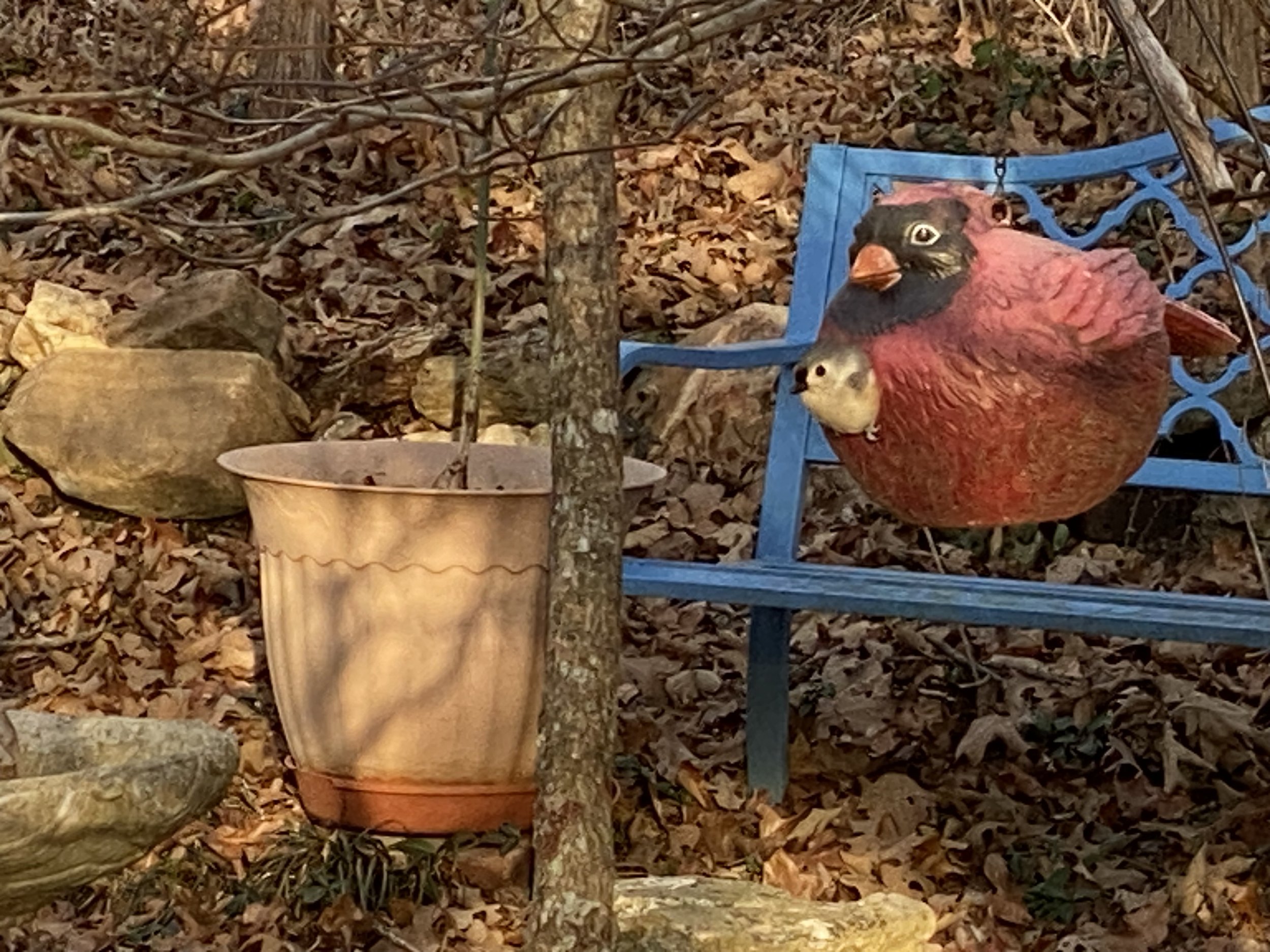How to Hang Birdhouses
/Tufted titmouse checking out one of my birdhouses february 2024. (charlotte ekker wiggins photo)
How to Hang Birdhouses
Sixty percent of bird species depend on bugs to feed their young, making birds an important element in gardens to balance the ecosystems.
If you are just starting your living bird collection, take a walk around your garden and look for spots that offer protection from predators and prevailing winds, and access to food and water. I have bird baths around my property as well as small rainwater ponds to encourage birds to settle in.
If you're buying birdhouses, most come with directions on what birds may move in and where to best hang the birdhouses.
Here's a quick guide on where to place birdhouses for Eastern Bluebirds, Wrens, Titmice and Cardinals.
Eastern Bluebirds:
Preferred Entrance Hole Size: 1.5 inches
Habitat Preference: Open woodlands, orchards, fields, and along the edges of forests.
Nesting Box Placement: Mount bluebird houses on posts or poles about 4 to 6 feet above the ground, facing towards an open area. Bluebirds prefer a little bit of distance between their nesting spot and dense vegetation.
Wrens:
Preferred Entrance Hole Size: 1 inch
Habitat Preference: Woodlands, suburban areas, and gardens with dense shrubbery.
Nesting Box Placement: Hang wren houses in a sheltered area, such as under eaves or tree branches, about 6 to 10 feet above the ground. Wrens often prefer locations that offer some protection from the elements.
They are also known to build several nests they don't use. Observe your wren houses to determine which ones are actually occupied. These birds are fun to hear and watch.
Titmice:
Preferred Entrance Hole Size: 1.25 inches
Habitat Preference: Woodlands, forests, parks, and suburban areas with mature trees.
Nesting Box Placement: Mount titmouse houses on trees or posts about 6 to 15 feet above the ground. Place them in a somewhat secluded area with moderate vegetation cover.
Cardinals:
Habitat Preference: Brushy areas, woodlands, gardens, and suburban areas with thick shrubbery.
Nesting Box Placement: Cardinals prefer to build nests in protected shrubs. Every year I find nests in my old-fashioned lilac bushes. I entice them by providing sunflower seeds through early spring.
One final note. I've had frogs in wren houses and bumblebees in bluebird houses so birdhouses can be homes to more than just birds.
For more gardening, beekeeping, cooking and easy home decor tips, subscribe to Garden Notes.
Charlotte












